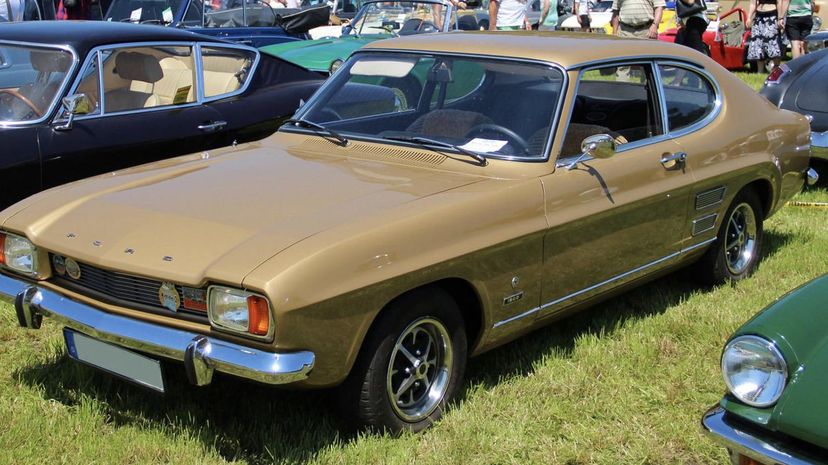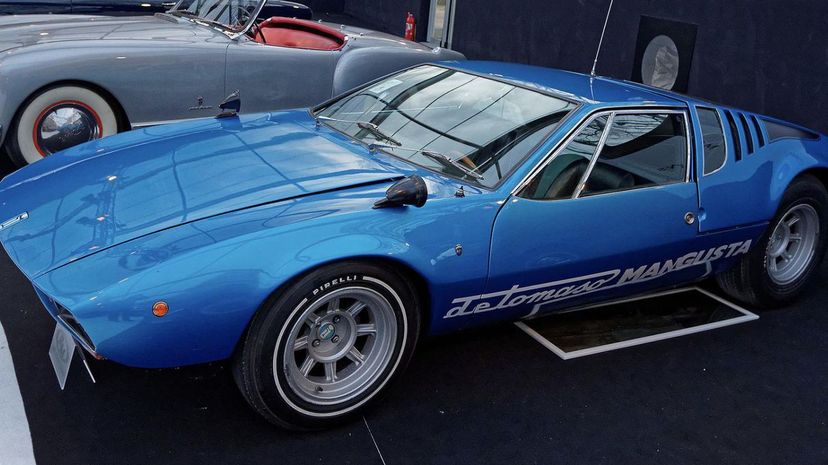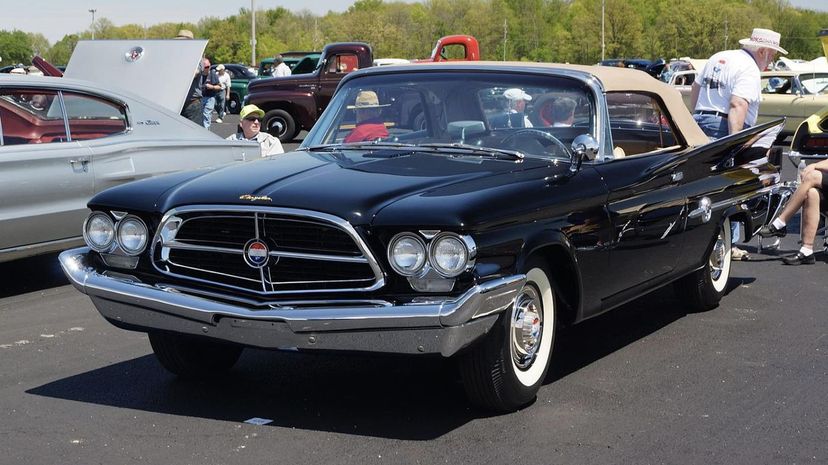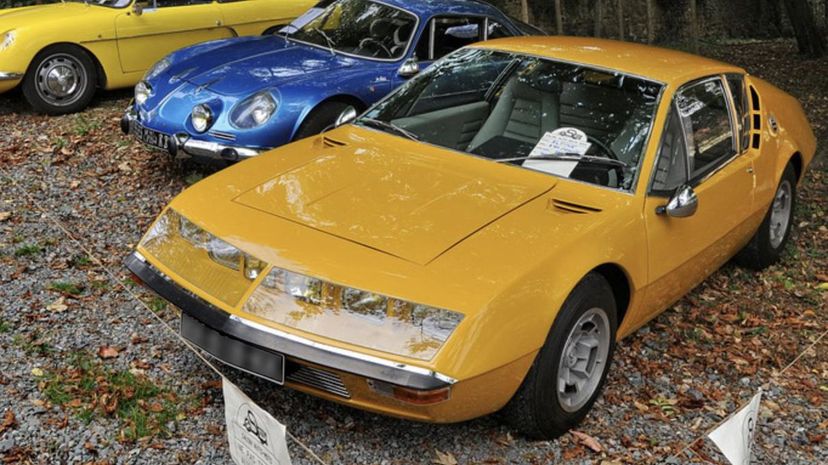
About This Quiz
Very few people look back at the '70s or '80s and think "Man, that was a decade when things really looked good." Not that there weren't beautiful designs in those decades, but they were the exception, not the rule. The '60s, on the other hand, were really a decade of gorgeous design in the automotive world where freedom of design and expression took center stage, building on what automakers of the'50s had just started toying with. Muscle cars, family cars, luxury cars, they were all designed far beyond the confines of utility. Something like the Lamborghini Miura embodies the European design sensibility of smooth, sleek, flowing lines that make it look like a living thing. And even the tiny, boxy Mini has a simple beauty to it that made it an icon of the decade.Â
Whether the refinement of a Mercedes-Benz 300 SL catches your eye or the raw power of a '66 Pontiac GTO is your cup of tea, there is a lot of beauty to behold in the '60s and we've done our best to assemble a list of the 40 most beautiful cars from the across the whole 10 years. Now let's see how many you can recognize!.

Some consider the Ford Mustang a muscle car, but it started the pony car segment which was defined by sporty, having four seats, affordable, a long hood with a short deck, and appealing to the youth market.

The Alfa Romeo Giulietta was one of the most popular models under the Alfa Romeo banner until it was replaced by the Giulia. It was actually a whole family of cars including the Spider, the Saloon, the Estate, the 2+2 Coupe, and others.

In 1964, Pontiac debuted the GTO and it just beat the Ford Mustang to market. As an early example of the American muscle car, it set the standard for how a muscle car should not just perform but look. By 1966 they were their own model and had refined their look.
Advertisement

The 1963 Chevy Corvette was the first model of the Corvette's second generation, what some call C2. This was the generation that introduced the Sting Ray and a much sportier styling than the first generation from the 1950s had.

The Ford Capri was intended as the European equivalent for the Ford Mustang and based heavily on the Ford Cortina. It proved to be extremely popular, with nearly 2 million of them sold over their lifetime.

The Jaguar E-Type was based on the Jaguar D-Type which was the company's racing version. In 1955, the D-Type won the 24 Hours of Le Mans race for three consecutive years. The road-faring E-Type had a top speed of 150 miles per hour.
Advertisement

The AMX/3 was a variant of the AMX and the program to make them was canceled after $2 million was sunk into it and only 5 cars were built. By all accounts, it was going to be a great car and once was clocked at 170 miles per hour, but the costs just kept rising so it had to be canned.

Fiat's standard 124 was a rather boxy and very European-styled automobile, not necessarily the best-looking vehicle on the road. The Sport Spider version, however, was extremely elegant. So much so that after Fiat stopped producing them, Pininfarina started making Pininfarina Spider Azzura in 1983

The Thunderbird is one of Ford's most iconic vehicles and very much defined the esthetic of the 1950s. By the 1960s, the styling changed up a bit but the 1966 convertible was absolutely sleek and sexy and powerful with a more squared-off appearance and an egg-crate front grille.
Advertisement

The Mini was one of the most, if not the most, iconic cars of the entire 1960s. It's synonymous with British culture in the '60s and Austin Powers himself even drove one in the movies.

De Tomaso made the Mangusta from 1967 to 1971. There's a rumor that the Mangusta got its name, Italian for mongoose, after a failed deal between Alejandro de Tomaso and Carroll Shelby. Shelby famously made the AC Cobra, and mongooses are famous for killing cobras.

Ford's GT40 is legendary in the world of racing, the Ferrari Killer that ended Ferrari's years-long streaking of winning the 24 Hours of Le Mans race. The GT40 won for four years straight starting in 1966.
Advertisement

Few cars cut quite as dramatic a figure in 1961 as the Mercedes-Benz 300 SL. It was the 1952 model of the 300 SL that actually pioneered those doors, so thank Mercedes next time you see a pair swooping open.

Few cars are as famous as the Aston Martin DB5 thanks to its fortuitous appearance in the movie "Goldfinger." Ever since, James Bond has routinely used the car as his mode of transportation in the movies.

Porche has been making 911s for decades, but the classic Porsches date back to 1963. They set a standard for small, sporty, sleek luxury cars that has been emulated dozens of times by other manufacturers ever since.
Advertisement

One of the most popular Chevys of all time and even one of the most popular cars of all time, the Chevy Camaro was Chevy's answer to the Ford Mustang. The Camaro was the pace car at the Indy 500 9 times, including in 1967.

The 1969 Maserati Ghibli convertible's top folded back under the front seats or it came with a removable hardtop, depending on your needs. A "ghibli," which most of us only know from Studio Ghibli, is a dry southwesterly wind in the Libyan desert.

The AC Cobra was sold as the Shelby Cobra in the United States, capitalizing on its association with legendary designer Carroll Shelby who also lent his talents to the Ford Shelby Mustang. The original Cobra was made back in 1962.
Advertisement

The Ferrari 250 GTO was arguably the gold standard for sports cars in the '60s and also for Ferraris in general. Motor Trend Classic named it the number one Ferrari of all time. Buyers had to be personally approved by Enzo Ferrari in the car's first year.

The Alfa Romeo 33 Stradale were produced between 1967 and 1969 and is considered one of the first supercars ever made. It was also the fastest commercially available car in the world when it debuted, able to go 0 to 62 mph in under 6 seconds with a top speed of 160 mph.

AMC made Javelins from 1967 until 1974. The windshield in the early models was slanted at a 59-degree angle and the hood had simulated scoops to keep the whole sporty muscle car look that made it a standout.
Advertisement

The Pontiac Firebird Trans Am would become one of the most famous cars of the 1970s thanks to "Smokey and the Bandit" but the 1969 year was the first time anyone got to see one, and it was very underrated, with only 697 of them sold.

The Citroen DS was manufactured for 20 years but if you had to pick the best model the redesign for the 1968 year is a definite standout. Made with smoother lines and a streamlined appearance it was shark-like and sleek and extremely memorable.

The Aston Martin DB4 GT Zagato was basically just a DB4 but Zagato, a coachbuilder and design center, made a few design improvements. The body was shrunk down and made more aerodynamic and much of the steel was replaced with aluminum to make it lighter and faster.
Advertisement

The Lotus Elite used fiberglass for the entire load-bearing structure of the car, which was pretty unique for the time. It was in development for an entire year before they released it, getting input from "carefully selected racing customers."

Chrysler's 300 letter series of cars were made from 1965 until 1975. The 300F convertible from 1960 got a new unibody frame construction with some sharper edges and more noticeable fins that kept the '50s styling alive.

The Ferrari Dino was manufactured by Ferrari but sold under the Dino marque. They were V6 mid-engine sports cars that were made from 1967 until 1974. Motor Trend Classic placed it as the number seven on their list of top Ferraris ever.
Advertisement

The Ferrari 275 is one of the best Ferraris the company has ever produced. Motor Trend labeled it the third-best Ferrari ever. The GTB came in two styles; the GTB I was the "short nose" style while the GTB 2 was the "long nose" style.

The Austin-Healey was in production from 1957 until 1967 and is arguably the best known car that the company ever made. These cars were so popular with American motorists that by 1963, over 90% of all exports were going to the United States.

Cisitalia made sports cars from 1946 until 1963. Many of the designers, including the designer of the 1960 Barchetta, had done previous design work for some of the most well-known auto makers in Italy like Maserati and Ferrari.
Advertisement

Facel Vega made the Facel II from 1962 to 1964.The company was almost bankrupt when the Facel II was released as a last-ditch effort to stay afloat. Only 180 of them were made but they were definitely luxurious.

The Maserati Sebring showed up in 1962 and was produced until 1969. During that whole period, only 593 were made. The Sebring was made for the world-famous 12 Hours of Sebring race that takes place in Sebring, Florida.

The Volvo P1800S was made from 1961 to 1973. In 1998, a Volvo P1800S managed to get a world record for being the highest mileage private vehicle driven by the original owner in non-commercial service, which is a mouthful. The owner had driven it over 3 million miles.
Advertisement

There were only 199 Ferrari 330 GTS models ever built, a convertible version of the somewhat more popular 330 GTC. It comes with the Ferrari 4.0L V12 engine which ensured just a tap on the gas would send this thing flying.

The Gordon-Keeble GT, sometimes just called the Gordon GT, was the result of a collaboration between John Gordon and Jim Keeble. Maybe because its first customer was a USAF pilot, the inside was designed with quilted aircraft PVC, toggle switches, and other airplane-inspired touches.

Ginetta made sports cars and race cars starting in 1958 and it's still in business today. The G4 was introduced back in 1961 and featured a fiberglass body and GT styling that gave it a sleek look while allowing it to perform well on the track.
Advertisement

French automaker Alpine started making the A110 in 1961 and produced them until 1977. Renault and Alpine actually resurrected the A100 back in 2017 for a more modern style Alpine, which is still in production to this day.

Iso Autoveicoli S.p.A. made the Iso Grifo from 1963 until 1974. They were designed to compete with Maserati and Ferrari but were made with parts from American manufacturers like Chevy and Ford to try to give them a bit of an edge.

The Bizzarrini Strada was the most successful model made by Bizzarrini and was produced from 1964 until 1968. Giotto Bizzarrini was once the chief engineer at Ferrari before he decided to branch out on his own in 1964.
Advertisement

The Lamborghini Miura was the fastest production car on the road when it was released in 1966. The company kept it in production until 1973 and made 764 of them in total. The name "Miura" comes from a famous breeder of fighting bulls.